Honey & Agave in Soap: Usage Rate & Tips + Recipes
Learn why and how to use honey or agave nectar in soap, how much to use, and tips on using them.
Plus, there are recipes for you to explore!
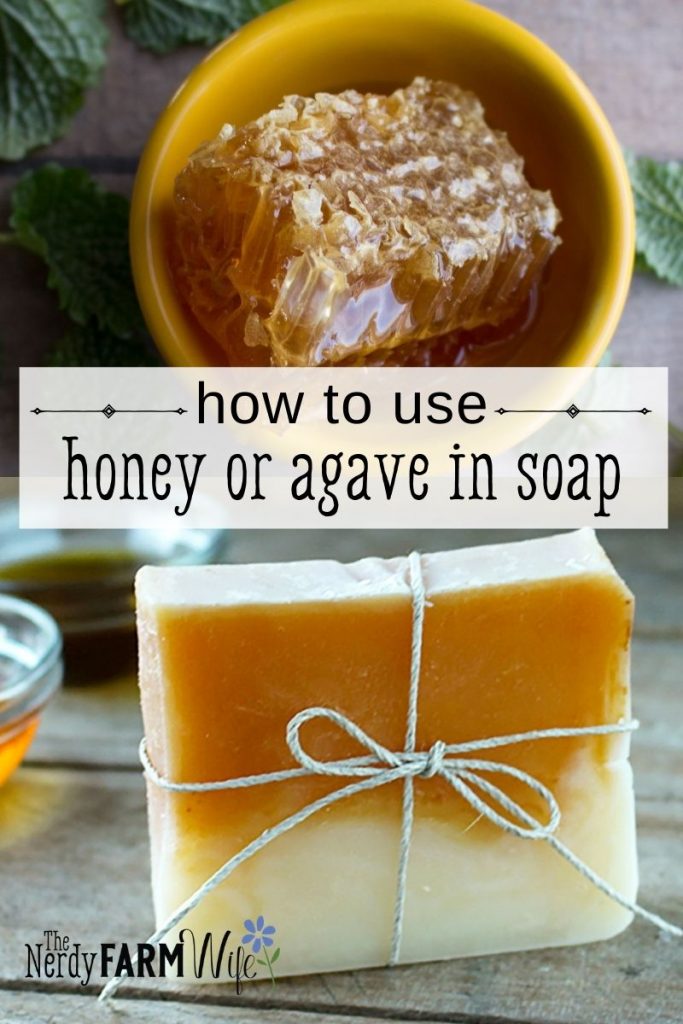
Honey is a humectant, which means it attracts and retains moisture, and it helps to soften rough or damaged skin.
In soapmaking, honey also has the bonus effect of boosting lather, due to its natural sugar content.
For vegan soapmakers: Agave nectar makes a great stand-in for honey and can be used to replace it in equal amounts in most any soap recipe.
Some links on this site are affiliate links; I only recommend products I personally use and enjoy. As an Amazon Associate, I earn from qualifying purchases.
How Much to Use in Soap
My personal usage rate for honey and agave nectar in soap tends to vary from 1/2 teaspoon PPO (per pound of oil in a recipe) up to or around 1 1/2 teaspoons PPO.
Resist the urge to use too much, as you could end up with a soft very dark soap. Too much can also cause overheating.
Less is more with honey and agave nectar!
Can You Add Honey or Agave to Hot Process Soap?
Yes, you can, however, both honey and agave should be added to the soap after the cook time.
Be sure to dilute with at least an equal amount of water to help it stir in more easily. It’s also a good idea to let the hot soap cool for about ten minutes before stirring in honey or agave nectar.
Scorched honey does NOT smell good in soap! (I learned this the hard way!) ?
So waiting those extra few minutes, and diluting the honey first, can really help.
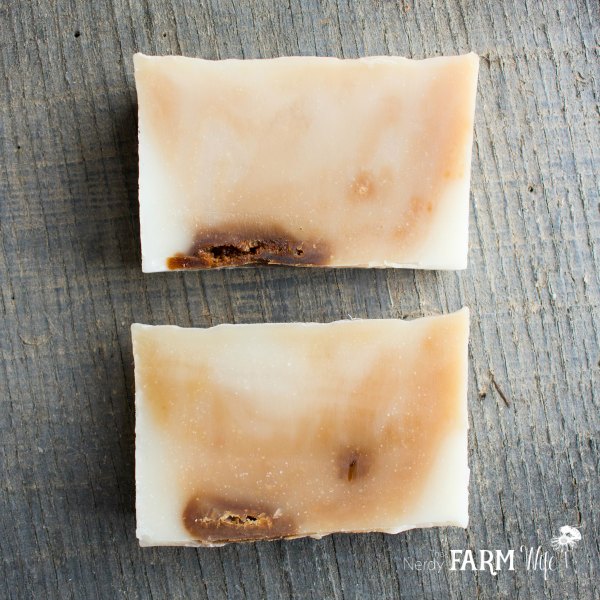
Tips for Using Honey or Agave in Cold Process Soap
1. Dilute with Water
Dilute honey or agave with at least an equal amount of water before stirring into the soap batter.
So if your recipe needs 1 teaspoon honey/agave, dilute it with 1 tsp water before stirring it in. Or you could dilute it with twice as much water if your honey is thick. Using warm water usually makes it easier to mix together than cold.
We do this so the honey/agave mixes into the soap batter more easily.
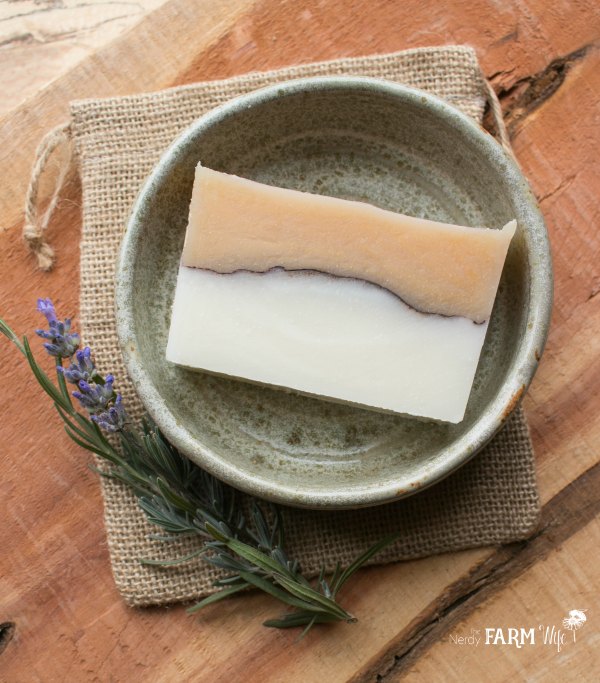
2. Honey & Agave = Extra Color
Honey tends to turn golden brown in soap when heated during gel phase. This can be used as a design effect (as shown in the Sweet Honey & Shea Layers Soap photo shared above, and the Hemp Oil & Honey Shampoo Bars Recipe shared below), but also means if you don’t stir the honey in thoroughly, you could end up with brown spots or streaks in your soap where it’s concentrated.
Agave nectar is less likely to turn as golden brown, but can cast a hue on your soap.
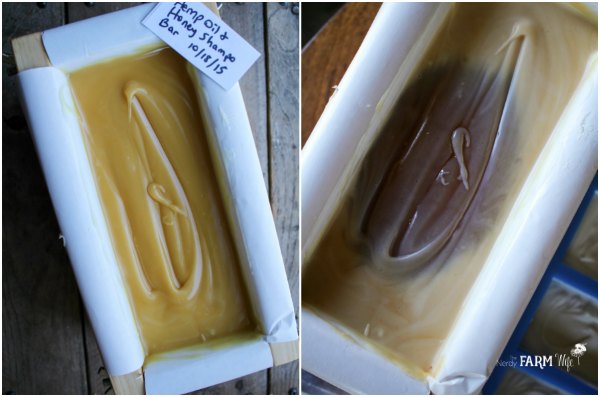
3. Natural Sugars = Extra Heat
Ingredients that contain natural sugars, such as honey and agave nectar, tend to heat up your soap. That means the soap will likely reach gel phase more easily and you might even run into cracks that form on the top of your soap.
You will likely not need to cover soaps that contain honey, unless you’re working in a cold room.
If you want to prevent gel phase completely with honey/agave soaps, then using individual molds are often the best bet.
You can also place the soap in the refrigerator overnight, but if using a loaf mold, there’s a risk of partial gel – where the middle heats up and turns brown, but the outside edges stay colder and lighter colored.
For more about partial gel and other soapmaking woes, check out my article:
What’s Wrong With My Soap? {troubleshooting cold process soap problems}
Other tips are to work with a cooler lye solution and oil temperatures (room temperature or up to/around 85-ish degrees F.)
Personally, I love the natural golden color that honey adds, so don’t normally try to prevent gel phase with honey soaps, but I am careful to monitor the soap during gel phase.
If a crack starts forming in the top, I move the mold to a cooler spot, place it on a cooling rack, and/or put a box fan in front of it to keep it cooler.
Recipes with Honey or Agave Nectar in Them
Here are some recipes to explore!
Remember that honey and agave can be interchanged in a soap recipe for a boost in lather and label appeal, but honey tends to darken more dramatically, so is better used for contrasting design purposes than agave.
If you’ve never made soap before, please visit my article Soapmaking 101 for more information.
You may also find my Handmade Natural Soap eBook Collection and/or my Soapmaking Success Course helpful.
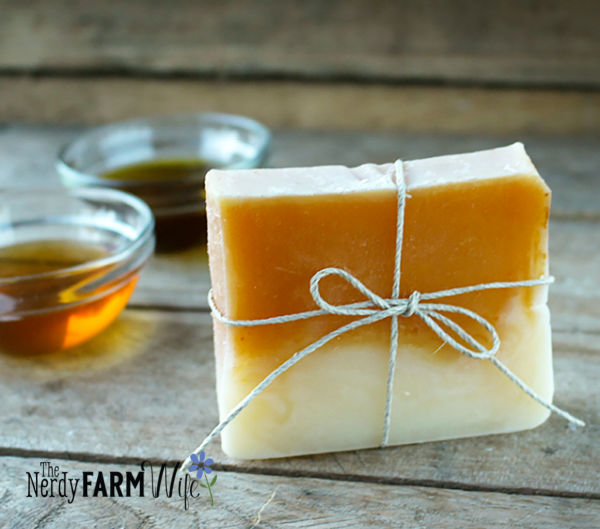
Hemp Oil & Honey Shampoo Bars
These shampoo bars have a two-toned color effect using honey and the heat from gel phase.
To make, pour half of the plain soap batter into the mold first, then stir the diluted honey into the remaining half of the soap, and pour over the plain layer. Make sure the soap goes through gel phase, so the color contrast shows.
I’ve also used this same strategy to make a contrasting honey swirl.
Alternatively, you can mix honey into the full batch for an all-over lighter golden brown color.
If you use a really dark green rich hemp seed oil, your soap may end up with a greenish hue, so be aware that oil color can play a part in this soap too.
You can also find this recipe in my DIY Specialty Soaps eBook!
Lye Solution
- 4.19 oz (119 g) sodium hydroxide (lye) (5% superfat)
- 9 oz (255 g) distilled water
Oils & Butters
- 12 oz (340 g) olive oil (40%)
- 8 oz (227 g) coconut oil (27%)
- 4 oz (113 g) castor oil (13%)
- 4 oz (113 g) hemp oil (13%)
- 2 oz (57 g) shea butter (7%)
Add-Ins
- 1 1/2 teaspoons honey, diluted with 1 tablespoon of distilled water
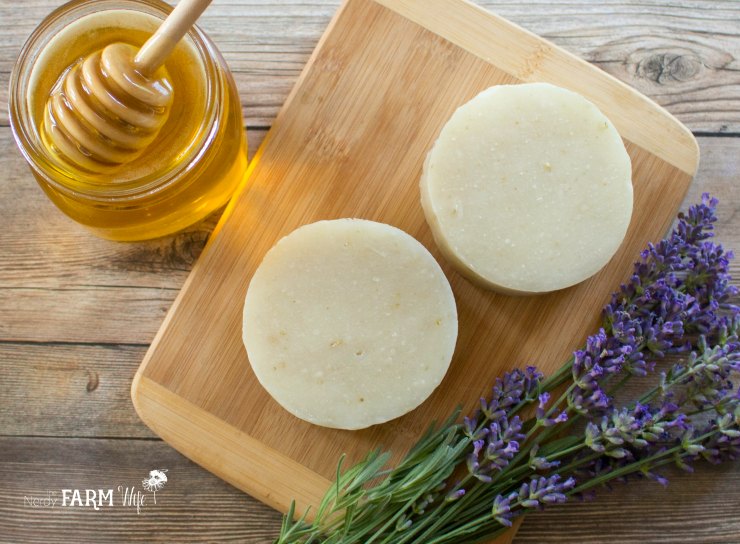
Oatmeal & Honey Soap
I have two recipe versions on my site – one is hot process (made in a crockpot) and the other is cold process (no external heat added).
1. How to Make Oatmeal Honey Soap in a Crock Pot
You’ll notice I used a higher amount of honey in the hot process soap. This is because you don’t have to worry about gel phase, cracked soap, and volcanoes when you add honey after cooking hot process soap, so you can be a little more liberal with the amount.
This recipe is cold process. It’s twice the size as my normal recipes and can easily be split in half to fit a Crafter’s Choice 1501 Silicone soap mold.

Triple Butter Silk & Agave Soap
This recipe can also be found in my print book, Simple & Natural Soapmaking.
Hop over to Soap Deli News for the full recipe!
You’ll need:
- cocoa butter
- mango butter
- shea butter
- olive oil
- coconut oil
- agave nectar
- silk (optional)
- lavender essential oil (optional)
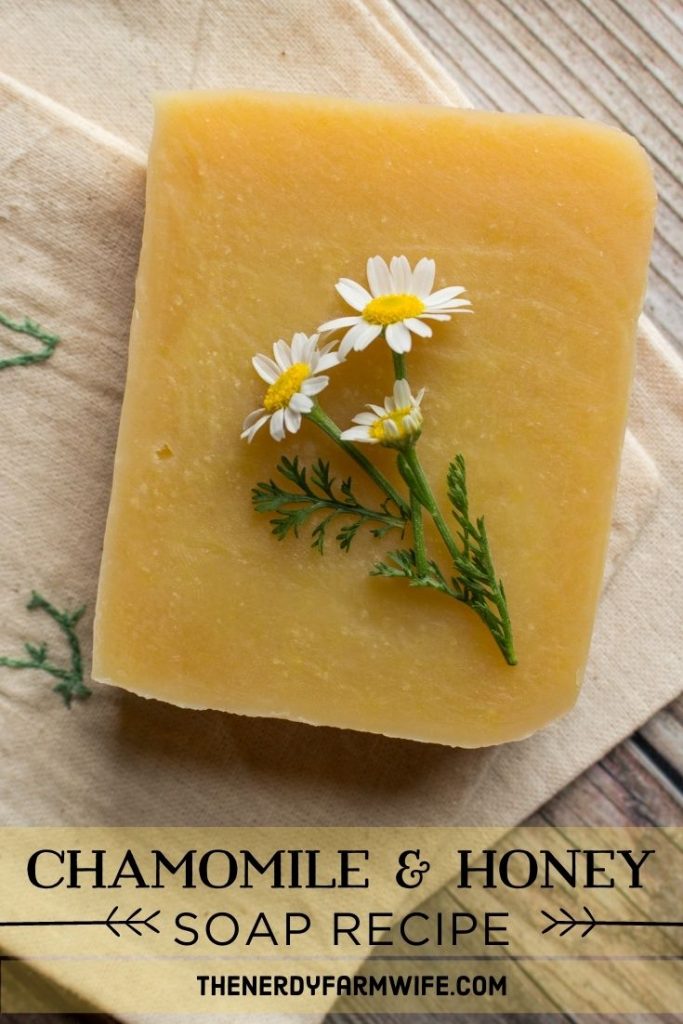
Chamomile & Honey Soap
This soap recipe features chamomile infused oil and honey – or you could use agave nectar instead.
To learn how to make chamomile infused oil, visit my article: 10 Things to Make with Chamomile.
If you’ve never made soap before, please visit my article Soapmaking 101 first, for more information.
Lye Solution
- 3.9 oz (111 g) lye (sodium hydroxide)
- 9 oz (198 g) distilled water or cold chamomile tea
- 1/8 tsp saffron powder, optional for added yellow color
Oils & Butters
- 7 oz (198 g) coconut oil (25%)
- 3 oz (85 g) cocoa butter (10.7%)
- 10 oz (284 g) olive oil (35.7%)
- 3.5 oz (99 g) sweet almond oil (12.5%)
- 3 oz (85 g) sunflower oil (10.7%)
- 1.5 oz (43 g) castor oil (5.4%)
Add-Ins
- 15 g 10x orange essential oil, 8 g lemongrass essential oil, and 10 g grapefruit essential oil
- 1 tsp honey diluted with 1 tsp water

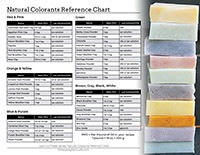

Always look forward to the recipes especially when they involve honey. Thanks for all the great ideas.
Hi Rose! I’m so glad you enjoyed the article! I love using honey in soap too! ❤
Hi Jan, I’m researching your site for noter recipes. A syrup maker gave me some of her noter challenging me to make a soap with it😀 I’m wondering if I can use it the same way you use honey in your soap recipes. And I usually make HP, so guessing if I can use it, to add after the cook as you suggest to do with the honey.
Thanks so much!
Donna, a big fan of yours 😊
Hi Donna! What a nice gift from your friend! :) I’m not familiar with what noter is?
Is it something similar to maple syrup? If so, I do believe that you could use it similar to agave or honey.
Low amounts, and if you’re making hot process soap, definitely add after the cook (and maybe let it cool a few minutes first) and I would also dilute with at least an equal part of water before adding so it stirs in easily.
Good luck with your soap experiments! :)